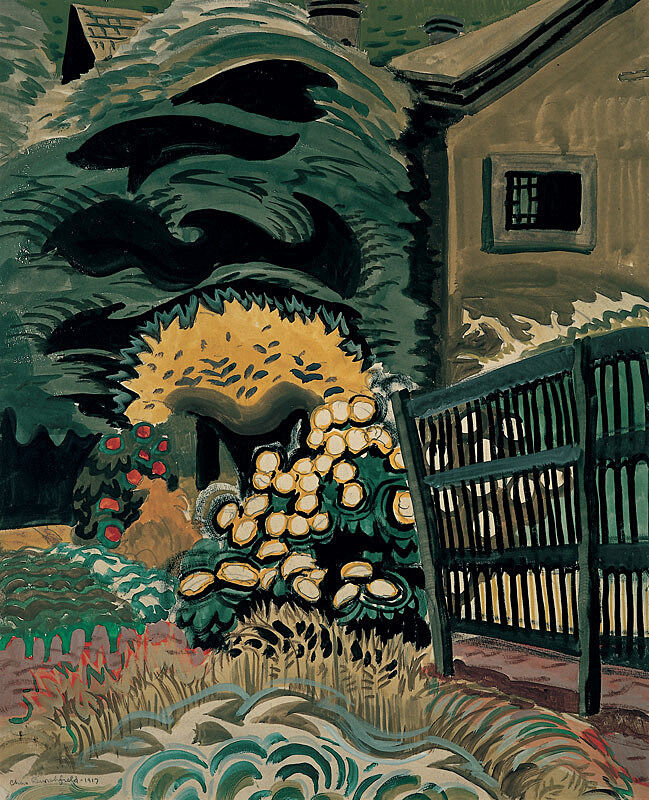Charles Burchfield, Noontide in Late May, 1917
Capture the energy and mood of a place.
Nature was the main inspiration for Charles Burchfield's work. Wherever he was, Burchfield would go outside and sketch the environment around him. He didn't just record what he saw—his work expressed the energy, mood, and emotions of these scenes. During his lifetime, Burchfield made almost two thousand paintings, as well as many drawings, sketches, and doodles. This is a painting of his neighbor's backyard on a hot day in late spring.
Have your students to carry a sketchbook with them for a week and ask them to make sketches of all the places they go. They should focus on capturing the energy or mood of the place, instead of drawing it perfectly. At the end of the week, go over the group of sketches as a class and discuss the various environments depicted. Which places were the most exciting? Which were the most tranquil? Which places were private, and which spaces were public?

